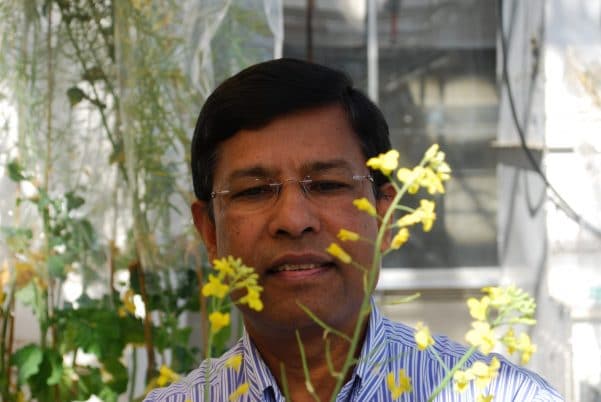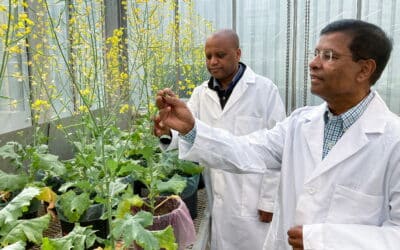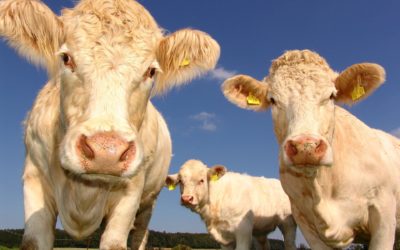Plant breeding wasn’t Dr. Habibur Rahman’s first interest. Indeed, Rahman initially thought he would get into the field of human or plant genetics.
But a chance conversation with a family friend convinced Rahman to enter an agricultural university after graduating from high school, and the rest, as they say, is history.
The eminent canola breeder first became interested in genetics when his high school biology teacher taught the class about the genetics behind human eye colour.
“I became very interested, learning about genes and chromosomes and cells. But when I finished high school, I thought I would study botany at university where I can get specialization in plant genetics,” he says. “But my brother’s friend suggested I attend an agriculture university that has a genetics department.”
Rahman attended Bangladesh Agricultural University, receiving his Bachelor of Science in Agriculture with Honours in 1980 and his Master of Science in Agriculture in Genetics and Plant Breeding in 1982. He completed his Ph.D. in Plant Breeding and Genetics at Royal Veterinary and Agricultural University (now known as Copenhagen University) in 1988.
From January 1989 to September 2003, Rahman worked as a canola breeder/senior breeder with a Danish seed company, Danisco Seed. During this period, he developed (solely or jointly) 47 spring and winterBrassica napus canola, high-oleic and low-linolenic acid canola, and high erucic rapeseed cultivars for European and North American markets. At one time, one of his winter canola cultivars, Aviso, captured about one-third of the French market. This cultivar has been used as check for blackleg disease resistance by the French official authority.
In 2003, Rahman accepted a position to teach and lead the canola program at the University of Alberta (U of A). At the time he joined the university, clubroot emerged as a threat to canola production in Canada. He immediately began work on finding solutions, identifying clubroot-resistant Brassicagermplasm, introgressing resistance into Canadian B. napuscanola, mapping some of the resistance genes and, in collaboration with an industry partner, developing the first clubroot resistant canola cultivar carrying multiple clubroot resistance genes.
Over the past 15 years, Rahman has continued his mission to improve canola for Alberta and Canadian crop producers. He introgressed exotic genes/alleles from different exotic gene pools, such as European winter canola, Chinese semi-winter type and rutabaga, and allied species, such as B. oleraceaand B. rapa, into Canadian canola, and developed a canola cultivar by the use of genetically diverse materials. And he contributed to the knowledge of the value of different gene pools for increased seed yield in hybrid canola cultivars.
In addition, Rahman has:
- Introgressed earliness of flowering from the C genome of the late-flowering species oleracea(Chinese kale) into B. napuscanola and mapped the flowering time genes and established their association with seed yield for use in breeding.
- Identified the B genome chromosomes of carinatathat carry resistance to blackleg disease for the introgression into B. napuscanola.
- Developed different fatty acid mutant lines of oleracea, including low-linolenic acid (C18:3), and characterized the C18:3 mutations at sequence level for use in the breeding of B. napuscanola.
- Mapped several agronomic and seed quality traits and identified molecular markers for use in marker-assisted breeding.
- Developed more than 120,000 SSR markers from the BrassicaA genome for use in breeding.
- Developed (solely) four additional canola cultivars for commercialization in Canada.
Rahman says the continued evolution of plant breeding has been a boon to the industry. When he entered the plant breeding field, he said only the most traditional plant breeding techniques were in place.
“But then in the early 1980s, doubled haploid breeding came about, and it was very fascinating and interesting,” he notes. “Then in the late 1980s/early 1990s a new tool came – the use of molecular markers in plant breeding. This was a big change, and we’re increasingly using molecular markers today in plant breeding.”
Other changes Rahman has seen during his career are the development and use of transgenics traits, and the development of hybrid canola cultivars.
As science continues to grow by leaps and bounds, Rahman says we should see more integration of molecular markers and genomics tools in breeding of crop cultivars.
“We’ve had molecular markers for many years now, but it has not been integrated into most breeding programs that much,” he says. “I expect the use of marker technology to increase as costs decrease.”
When he’s not in the lab at the U of A, Rahman teaches an undergraduate plant breeding course, Genetic Improvement of Crop Plants, and the graduate course Plant Breeding. He has also been teaching the graduate course Seminar in Plant Science. Over the past five years, he’s graduated nine M.Sc. students and over the course of his 15 years at U of A, 13 M.Sc. and two Ph.D. students. He currently supervises four M.Sc. students and supervises or co-supervises four Ph.D. students. He also supervises two postdoctoral fellows, two research associates and three technicians.
Since joining the U of A, Rahman has published 45 papers in refereed journals and eight papers in conference proceedings (over his lifetime 65 papers in refereed journals, 14 in conference proceedings and one book chapter). He has received several research grants as principal investigator or co-principal investigator for conducting breeding research on canola in the areas of clubroot and blackleg disease resistance, genetic diversity and heterosis, earliness of flowering and maturity without yield penalty, clubroot and blackleg disease resistance, yellow seed colour and seed meal quality, fatty acid profile of oil and increasing seed oil content.
There’s no doubt Rahman possesses strong academic and commercial plant breeding expertise, and the combination of these two makes him a very unique plant breeder. He has made huge contributions to plant breeding research, to training of the next generation of plant breeders, and has made important contributions to the practical application of research for the development of commercial cultivars.
Despite a highly-successful plant breeding career, Rahman isn’t slowing down. He’s got plans and dreams.
“I hope to have more money and more time to do more research to integrate molecular tools in breeding,” he says. “And I’d like to see all students include a molecular component in their research and integrate this with breeding.
“I would also like to see more integration of molecular tools and research, including the finding of beneficial genes and alleles in Brassicavegetables and allied species, in the breeding of canola cultivars; lots of important genes and alleles can be found in Brassica– beyond the boundary of B. napuscanola. If I had a few million dollars, I’d put up a centre for this.”





